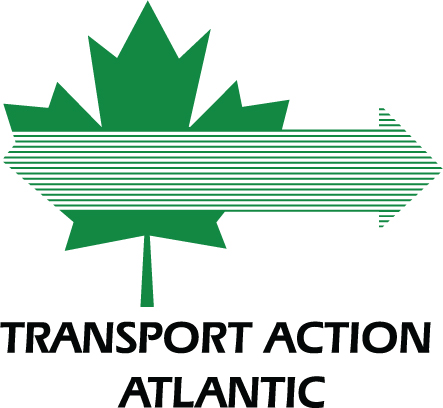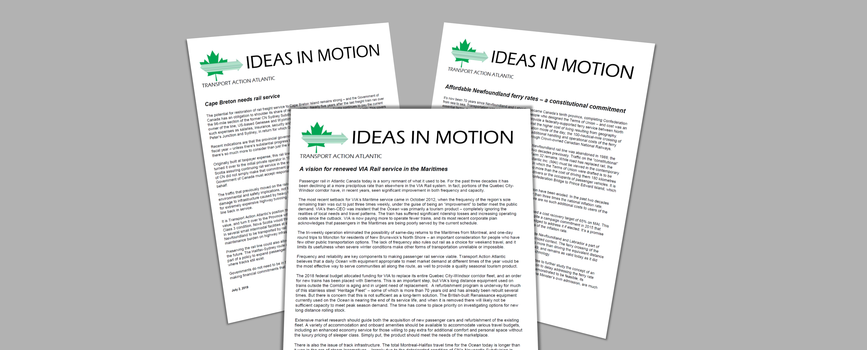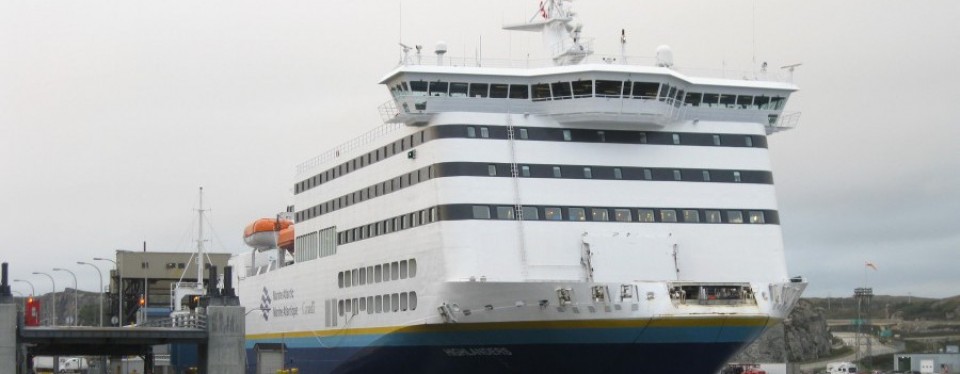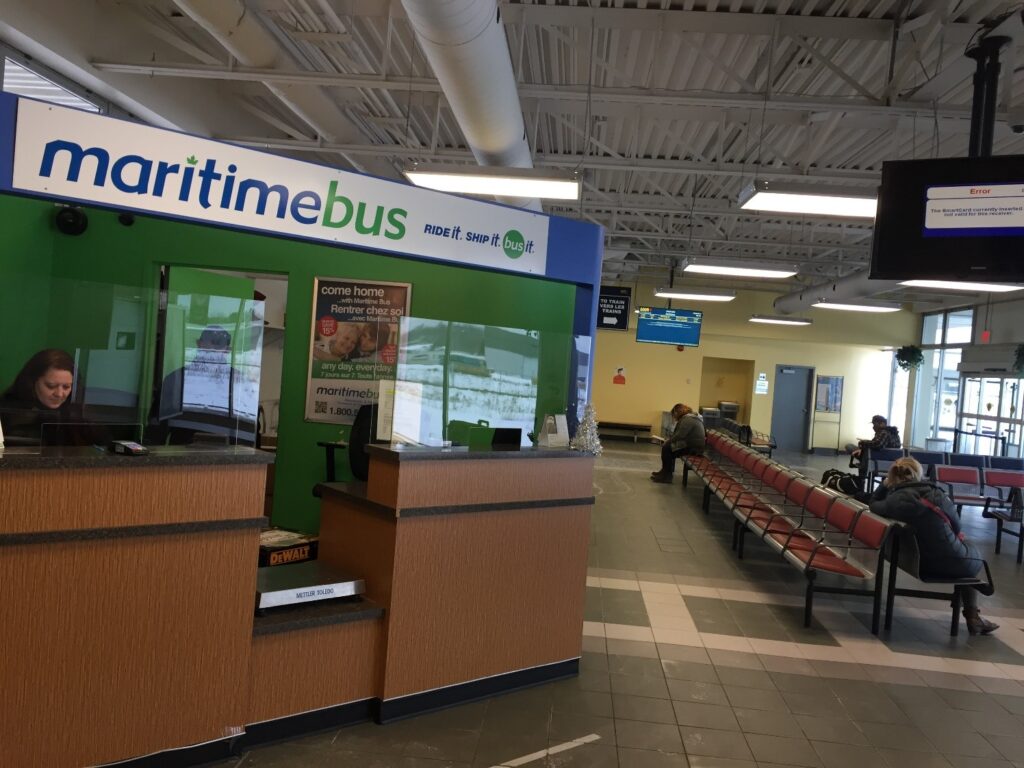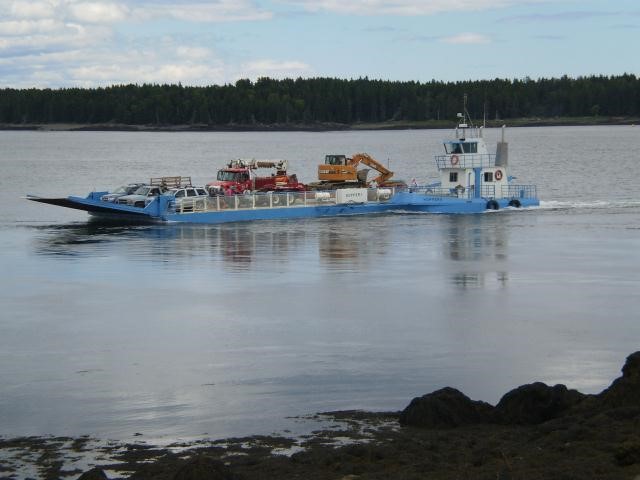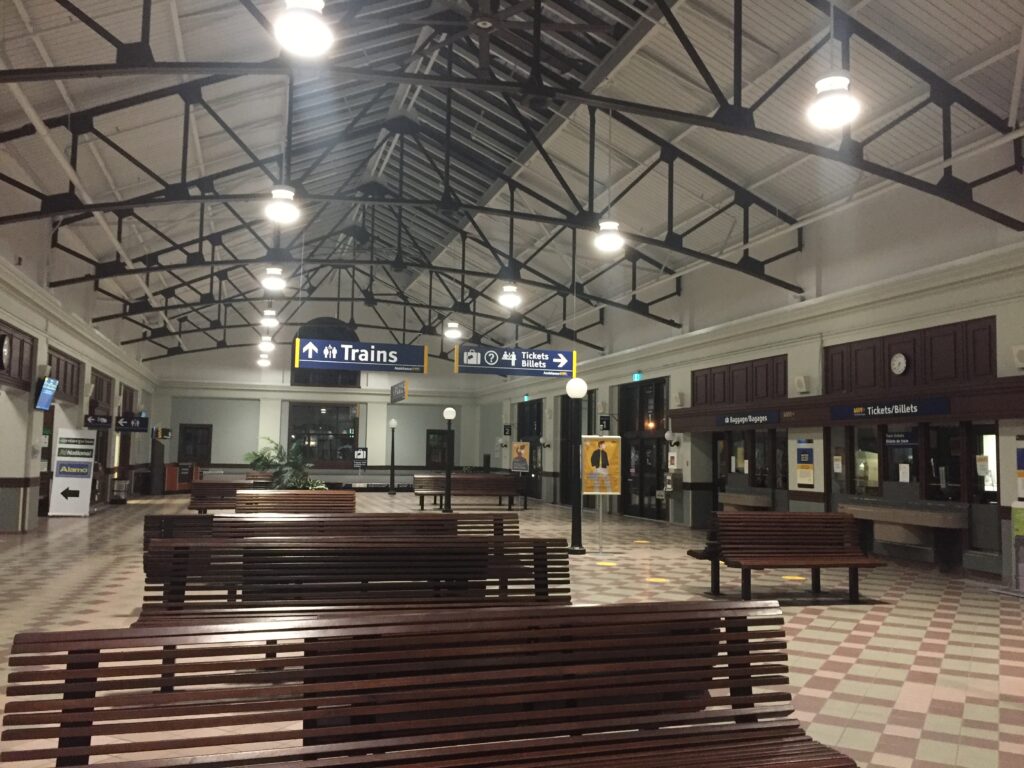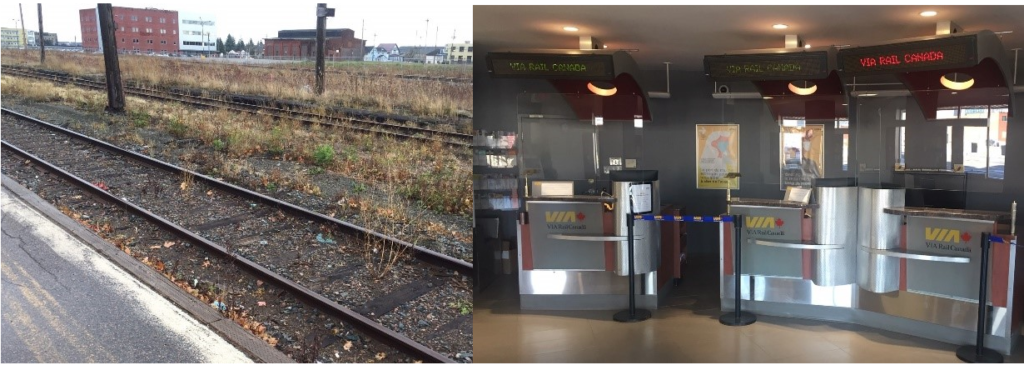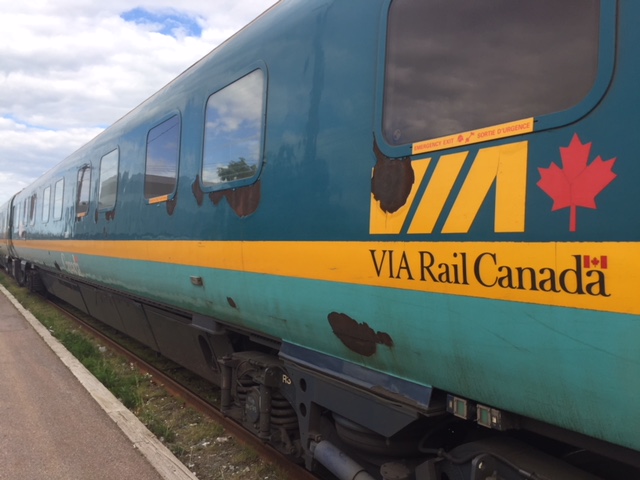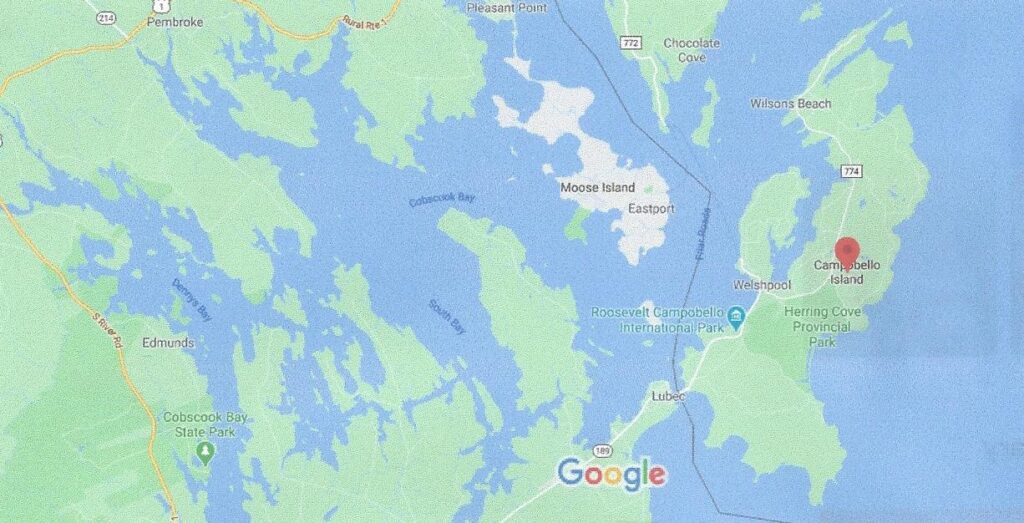Welcome to the February edition of Atlantic Transport News!
Here’s a look at what you’ll find in this edition:
- Northern New Brunswick motorcoach service saved!
- Marine Atlantic rates increased again
- Another season lost for Bar Harbor ferry
- Airports plead for help as service cutbacks continue
- VIA service won’t be back before mid-May
- TAA award honours transit and motorcoach operators
NORTHERN NEW BRUNSWICK MOTORCOACH SERVICE SAVED
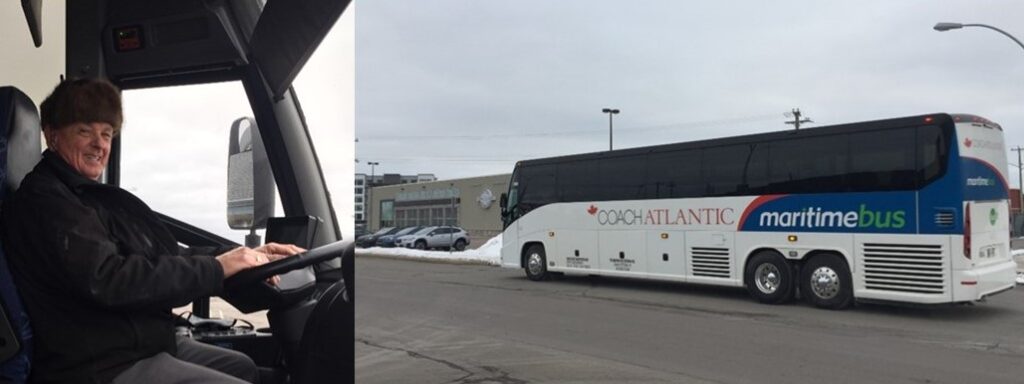
New Brunswickers in the northern part of the province will continue to benefit from motorcoach passenger and parcel service through the remainder of 2021, after an eleventh-hour solution involving Maritime Bus and three levels of government was reached. Faced with mounting operating losses, the bus operator announced indefinite closure of its services between Moncton and Campbellton and Fredericton and Edmundston, effective January 15, unless the provincial government was prepared to lend a helping hand. The deadline was subsequently extended to month-end to allow more time for a solution to be worked out.
Although the governments of Nova Scotia and Prince Edward Island had declared their willingness to offer financial support to keep buses running through the pandemic, Premier Blaine Higgs refused to contribute, saying his government wasn’t going to fund for-profit corporations. The position ignored the harsh reality that the company lost nearly $4 million on its line-haul operations in 2020 because of COVID-19 – not to mention the massive revenue losses when its charter operations were brought to a standstill by the pandemic.
Under pressure from a wide variety of interests (including Transport Action Atlantic), the government finally backtracked. In a rare display of non-partisan solidarity, 21 senators from the Maritime provinces signed a letter to the Prime Minister urging help for the struggling bus industry. With a federal government contribution under the Safe Restart program on the table, the Province allocated some money through its Regional Development Corporation, and saved face by transferring the provincial share to the City of Edmundston to be passed on to Maritime Bus.
The northern municipalities, although pleased that a solution has been reached, were less than satisfied with the process. Apparently, this money was diverted from funding that the RDC was already holding for eventual distribution to towns and cities under the Safe Restart agreement, so the already cash-strapped municipal coffers were in effect paying for what they viewed as a provincial responsibility.
Mike Cassidy of Maritime Bus credits Local Government Minister Daniel Allain and Frédérick Dion of the Federation of Francophone Municipalities with brokering the eventual outcome, with the support of the senators and federal Intergovernmental Affairs Minister Dominic LeBlanc. Curiously, the Department of Transportation and Infrastructure apparently wasn’t involved in the process at all.
Mr. Cassidy tells TAA that the level of political action in all this was incredible, commenting that it isn’t right to be so involved with politics when you are trying to save your company and industry, especially after the other two provinces agreed participate. Meanwhile, he is deeply concerned about the future of the motorcoach industry nation-wide, and is working with other operators to promote bus connectivity across Canada for both passengers and parcels post-COVID.
“Governments must understand that busing is part of the mobile infrastructure,” he says, adding that the first step should be getting all the provinces to co-operate in building back a cohesive coast-to-coast network.
MARINE ATLANTIC RATES INCREASED AGAIN
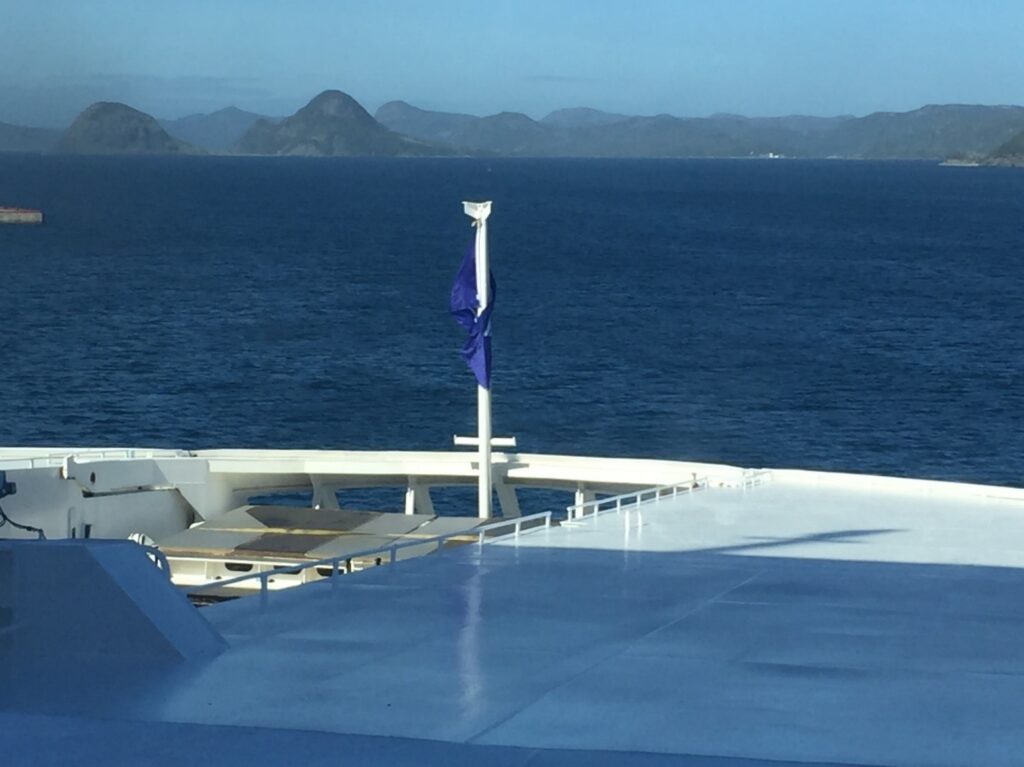
It appears that Transport Canada is totally without mercy in its demands for 65% cost recovery on the constitutional Newfoundland ferry service provided by Marine Atlantic – global pandemic notwithstanding. On February 1 the federal Crown corporation announced that most of its rates would be going up at the start of the next fiscal year, beginning in April. A company spokesman told NTV News that Marine Atlantic had failed to meet its financial targets in 2020 because of dramatically reduced passenger revenues, and had no option but to aim for making up the shortfall in 2021.
There will be no increase in passenger and passenger vehicle rates on the North Sydney- Port aux Basques route, but both passenger and commercial users of the seasonal Argentia route (where Transport Canada requires full recovery on marginal costs) will pay 2.5% more. That, of course, assumes that the service actually runs this summer. It was cancelled entirely for 2020, but reservations are now being accepted for two round trips a week beginning in late June, with the possibility of a third sailing being added should demand materialize.
But far more critical is the two percent increase for commercial traffic on the company’s main route to Port aux Basques, coupled with a 3.4% hike in the drop trailer management fee. This is expected to have a noticeable impact on the cost of living on the island, as a large proportion of groceries and everyday household needs as well as building supplies are carried by drop trailers.
For the hospitality industry the fare hike comes at a particularly inopportune time. In the aftermath of COVID-19, with air transportation in serious crisis and unlikely to recover in the near future, affordable ferry service will be particularly important to the struggling tourism sector. If the Atlantic Bubble is restored by summer 2021, Marine Atlantic will be uniquely positioned to bring significant numbers of visitors from the Maritimes – if the price is right.
With no expectation the rate increase was imminent, Transport Action Atlantic had already initiated an effort to get ferry rates on the table as an issue in the February 13 provincial election. Although the service is clearly a federal responsibility, TAA believes the issue will only be addressed if there is a strong protest from provincial politicians. Accordingly, the parties had been asked to present their positions by answering two questions:
- Does your party support the principle that the ferry service between Port aux Basques and North Sydney is a part of the Trans Canada Highway, and as such the cost to users should be comparable to travelling the equivalent distance by road?
- Regardless of the outcome of the February 13 provincial election, will your party demand a full review of the existing Marine Atlantic ferry rates to ensure that the Government of Canada is compliant with the spirit of the 1949 Terms of Union?
TAA plans to post any responses received on its website prior to polling day.
ANOTHER SEASON LOST FOR BAR HARBOR FERRY
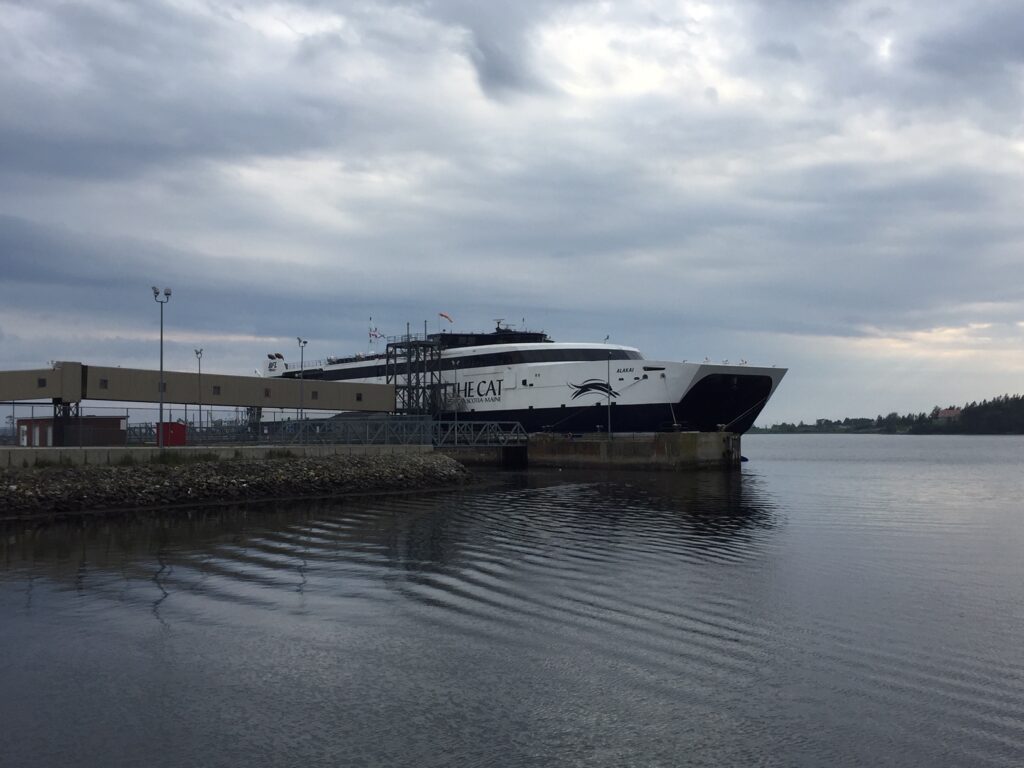
It will be at least another year until the international ferry service between Yarmouth and Maine resumes. On February 1, the provincial government announced that the entire 2021 sailing season would be cancelled, citing ongoing COVID concerns, continued international border restrictions, and the likelihood that a critical percentage of the general population will not be vaccinated until the summer. The move is anticipated to save on certain costs such as marketing and season preparations and hiring crew, which would otherwise have taken place if the season was scheduled and later postponed or canceled. Still, there will be certain fixed costs to keep up basic maintenance and infrastructure work in the interim.
This will be the third year in a row that the high-speed Cat ferry will sit idle. The service for the 2019 season was slated to move its American terminus to Bar Harbor after previously serving Portland, but the move ran into hurdles with the completion of the new American facility, resulting in repeated postponements and then full cancellation of the season. With the terminal then complete, the 2020 season was anticipated to see a return, but COVID restrictions once again caused postponements and an eventual cancellation of the full season.
The absence of the ferry service has continued to be a blow to the tourism industry in southwest Nova Scotia, though as COVID continues to restrict non-essential travel, those challenges will persist with or without the ferry in operation. Hopefully the 2022 season will find the region (and the broader world!) in better shape.
AIRPORTS PLEAD FOR HELP AS SERVICE CUTBACKS CONTINUE

Just when we thought the air travel situation in Atlantic Canada couldn’t get much worse – it did. Just days after indefinitely suspending all service from Sydney and Saint John, Air Canada added Fredericton to its no-fly list. As of January 23, the only airport in New Brunswick with scheduled passenger service is Moncton. And, on the same date, the direct Air Canada service between Toronto and St. John’s which had existed for decades came to an end.
The cutbacks in scheduled service have had a drastic effect on all airport authorities in the region. Even for those now deserted by Air Canada and WestJet, the bills still have to be paid as the runways must be kept open for general aviation and emergency medical flights. The total revenue loss for 2020 among members of the Atlantic Canada Airports Association is estimated a $140 million, which the ACAA says will have a substantial impact on cash flow and future financial viability, with a severe trickle-down effect on the respective communities. They’re asking for federal government help to keep the lights on while they await the end of the pandemic. But even then, they aren’t expecting a rapid recovery.
Meanwhile, a retired airline executive told CBC News that he isn’t anticipating a quick resumption of the cancelled services once the pandemic subsides. Duncan Dee, former COO at Air Canada, said reactivating idle aircraft and personnel takes time, adding that he suspects management will take a “wait and see” attitude and evaluate demand at Moncton before making a decision on other New Brunswick airports.
The chambers of commerce in New Brunswick’s three largest cities are not content to wait. They’ve joined together in a united campaign to oppose those who suggest that single airport scheduled passenger service for the entire province may the way of the future. That possibility was raised in the recent provincial budget speech. Moncton, Fredericton and Saint John were all profitable airports pre-pandemic, with a combined economic impact of $765 million, the chambers note, insisting that economic prosperity demands that scheduled service be returned to all three as the public health threat subsides.
The one airline that seems to be bucking the pandemic trend has been forced to adjust its services from Moncton to Newfoundland and Labrador to accommodate the latest round of travel restrictions. St. John’s-based PAL Airlines has abandoned its service between Charlo NB and Wabush NL, and combined it with a new route linking Moncton with Deer Lake. And, until interprovincial travel restrictions are eased, non-stop service between YQM and YYT has been temporarily eliminated. As of January 10, a tri-weekly DASH-8-300 is flying St. John’s – Deer Lake – Moncton – Wabush and return. PAL’s Janine Brown says a daily St. John’s – Moncton – Ottawa routing is still their post-pandemic objective, with a separate service planned for Deer Lake and Wabush.
VIA SERVICE WON’T BE BACK BEFORE MID-MAY
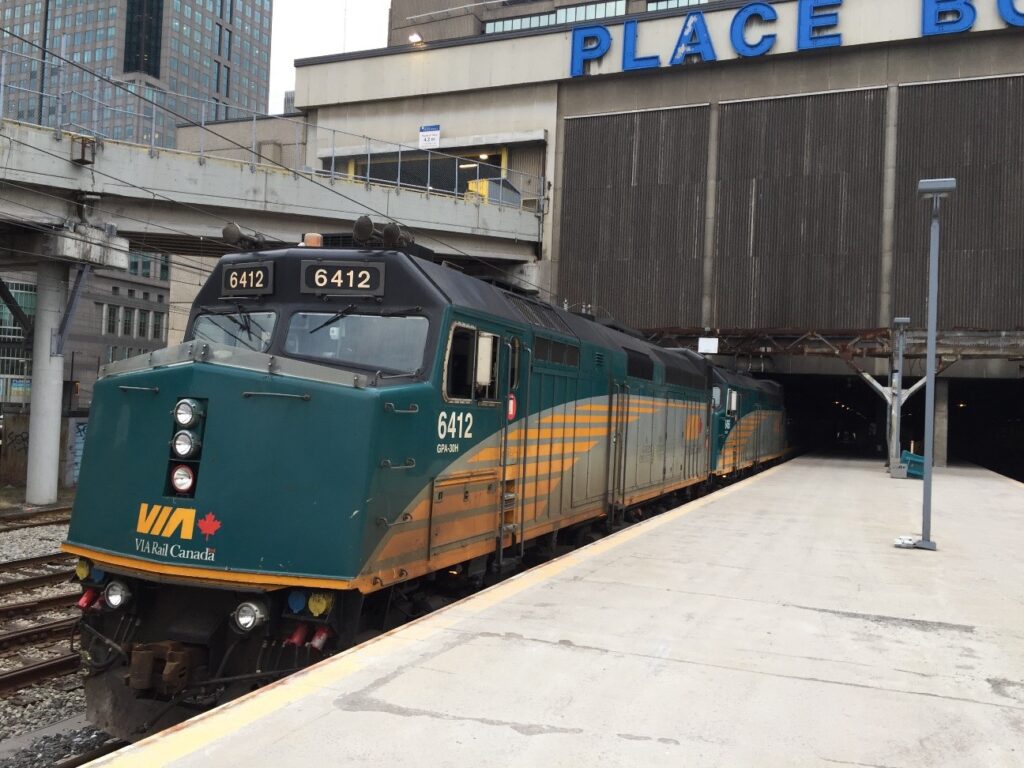
In what continues to be a pattern fitting of Groundhog Day, VIA has extended the cancellation of the Ocean through at least May 15, 2021. This continues the rolling pattern of recent months, where bookings for the next few months were first blocked and then outright cancelled as time approached. It also now guarantees that the earliest possible service resumption on the east coast will be the beginning of what would normally be the peak season for the year, though it’s unlikely to be anything resembling the normal travel season, and leaves Atlantic Canada without passenger rail service for more than a year. It still remains to be seen what exactly the service offering will look like when the train does resume.
The exact date that service will actually resume still remains unclear. The passenger carrier continues to insist that it intends to resume service when it is safe to do so, but it is likely that this date will be dependent on when travel restrictions between Quebec and the Atlantic provinces ease – and that remains heavily dependent on COVID case numbers and dynamics between the provinces.
VIA has also extended the modified service offering on the Canadian, with only one weekly departure west of Winnipeg and heavily modified onboard services, through the middle of May, and the Winnipeg-Churchill’s economy-only service will also continue through that time. Meanwhile, further Corridor service reductions have rolled out in recent weeks in light of further restrictions in Ontario and Quebec. It’s clear all across the country that the interruptions to VIA will be here for some time yet.
TAA AWARD HONOURS TRANSIT AND MOTORCOACH DRIVERS

Transit systems throughout the region continue to struggle under the pandemic burden of greatly reduced ridership revenue coupled with higher operating costs. But they were pleased to receive a bit of recognition from Transport Action Atlantic recently. TAA has decided to confer its John Pearce Award for 2020 collectively on all the transit and motorcoach drivers throughout the four provinces who have continued to report for duty without interruption during COVID-19 in order to transport essential workers to their jobs and ensure mobility within their communities. They faithfully fulfilled their daily responsibilities, and not without significant risk to their personal health and safety despite all the precautions that had been put in place.
“Halifax Transit’s bus operators and ferry crews’ pride in public service during COVID-19 has been exemplary,” said Dave Reage, director of Halifax Transit. “I am so proud of their ongoing commitment to our customers and community. Throughout these challenging times, they have worked together to keep Halifax moving!”
Judy Powell, general manager of Metrobus Transit in St. John’s commented “During this difficult time, they put our customers ahead of themselves to ensure the people of our communities could access essential goods and services.”
The John Pearce Award is given annually to recognize an outstanding contribution to the public transportation cause. It was created by TAA in 2017 to commemorate the lifetime achievements in public transportation advocacy by the late Mr. Pearce, a founding father of the association’s predecessor Transport 2000 Atlantic, a past president, and long-time member of the board.
